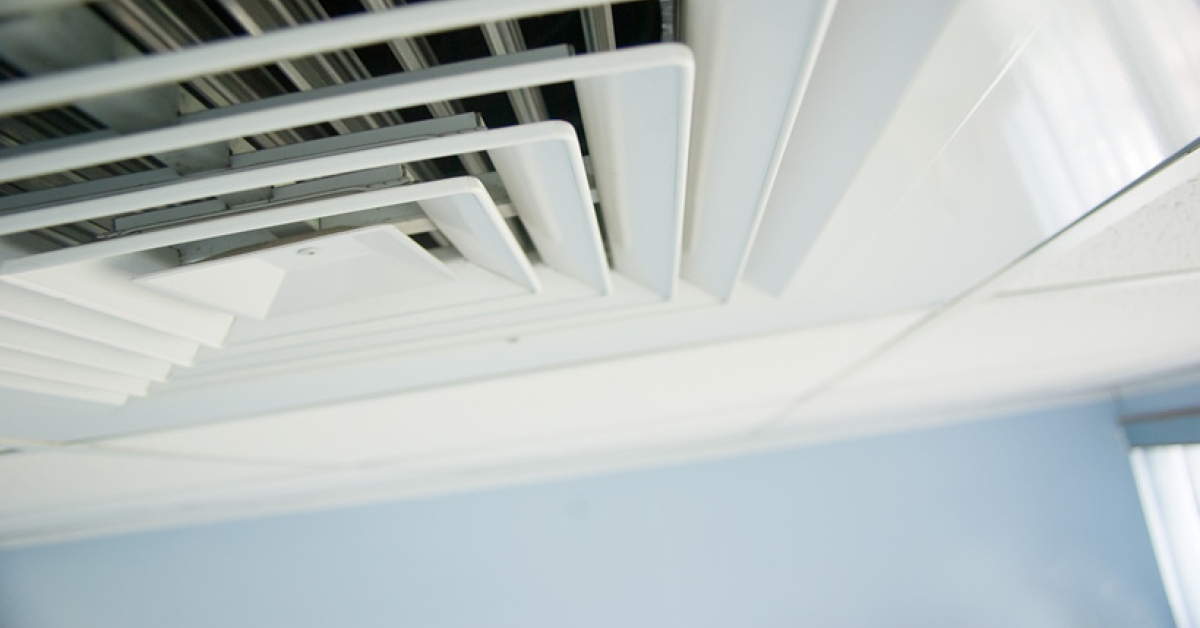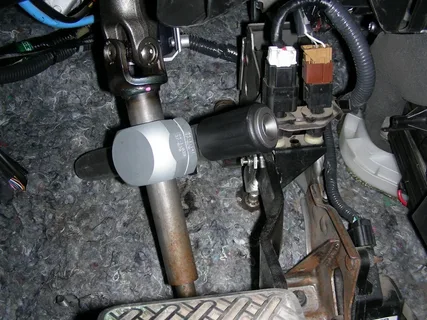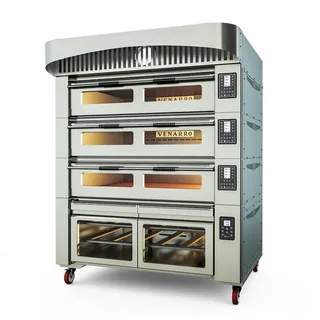Mechanical Air Ventilation is an essential intervention in caring for patients with respiratory insufficiency. Predominantly used in intensive care settings, this technology delivers controlled breaths to patients who cannot breathe adequately on their own. It plays a pivotal role in treating a range of medical conditions, including acute respiratory distress syndrome, chronic obstructive pulmonary disease, and postoperative respiratory failure. The technology operates through sophisticated machines that adjust the air flow to meet the patient’s specific respiratory needs. With continuous advancements, Mechanical Ventilation now encompasses a variety of modes and settings tailored to optimise patient care and improve outcomes. Understanding its intricacies is crucial for critical and emergency care healthcare professionals.
Types of Mechanical Air Ventilation Systems
Mechanical Air Ventilation systems are broadly categorised into invasive and non-invasive types, each serving distinct clinical purposes. Invasive Mechanical Air Ventilation requires the insertion of an endotracheal tube or a tracheostomy, enabling direct airflow into the lungs. This method is commonly utilised in cases necessitating prolonged respiratory support, such as severe respiratory failure. Conversely, non-invasive Mechanical Air Ventilation utilises masks or similar interfaces to deliver air without penetrating the body. This approach is often applied to patients with conditions like sleep apnoea or chronic obstructive pulmonary disease (COPD), where less intensive intervention is required.
Invasive Mechanical Air Ventilation is typically chosen when the patient’s condition demands more respiratory assistance and closer monitoring. This type allows for precise control over breathing parameters, ensuring patients receive oxygenation and ventilation support. Non-invasive, less invasive Mechanical Air Ventilation is advantageous for patients who require short-term or intermittent support. It offers greater comfort and reduces the risk of complications associated with invasive methods, such as infections or trauma to the airways.
Healthcare professionals select the appropriate ventilation system based on a thorough assessment of the patient’s condition, medical history, and specific respiratory needs. Each system has its benefits and limitations, and the choice of method is critical to ensuring effective and safe respiratory support.
Components of a Mechanical Ventilator
A mechanical ventilator consists of several integral components, each playing a crucial role in its function.
- The core unit generates and regulates the flow of air or oxygen mixtures to the patient. This central unit has a sophisticated control system allows healthcare professionals to adjust settings according to the patient’s respiratory needs.
- Another key component is the ventilator circuit, comprising tubes and connectors that deliver the generated airflow from the ventilator to the patient. These circuits must be designed to ensure minimal resistance and prevent any pressure loss, guaranteeing efficient delivery of respiratory support.
- Additionally, a humidifier is incorporated into the ventilator system to add moisture to the delivered air. This is essential to prevent the patient’s airways from drying and maintain mucosal integrity, vital for comfort and reducing the risk of airway complications.
- Other critical components include filters that ensure the air is free from contaminants and bacteria and sensors that continuously monitor parameters like pressure, volume, and oxygen levels. These sensors feed data to the control unit, allowing for real-time adjustments and ensuring optimal patient care.
- Finally, alarms are integrated into the system to alert healthcare providers to abnormalities or malfunctions, enabling prompt intervention to maintain patient safety.
Each component’s seamless operation is indispensable for the effective functioning of mechanical ventilators.
Ventilation Modes
Mechanical ventilators offer a range of ventilation modes, each designed to address specific clinical needs and support patients with varying respiratory conditions. The selection of an appropriate mode is crucial for effective respiratory support. Here are some of the key ventilation modes and their benefits.
Assist-Control Ventilation Mode
Assist-Control mode ensures a predetermined air volume is delivered with each breath, regardless of whether the patient or the machine initiates it. This mode provides consistent respiratory support, making it particularly beneficial for patients who require reliable and controlled ventilation.
Synchronized Intermittent Mandatory Ventilation (SIMV)
SIMV allows patients to take spontaneous breaths between mandatory ventilator breaths, aiding in the weaning process. This mode helps patients gradually transition from full ventilator support to independent breathing, promoting respiratory muscle strength and coordination.
Pressure Support Ventilation (PSV)
PSV assists spontaneous breathing by providing a preset pressure level, reducing the effort required by the patient. This mode is often employed for patients with some respiratory effort but who need additional support to maintain adequate ventilation, making breathing more comfortable and efficient.
Continuous Positive Airway Pressure (CPAP)
CPAP maintains a constant positive pressure to keep airways open, primarily used for patients with sleep apnoea. This mode prevents airway collapse during sleep, ensuring continuous and unobstructed breathing, improving sleep quality and reducing associated health risks.
Tailored Ventilation Strategies
Each ventilation mode offers unique advantages, catering to patients’ diverse requirements. The selection of the appropriate mode is guided by careful assessment of the patient’s respiratory status, underlying conditions, and overall treatment objectives. This ensures the ventilation strategy is optimized to support the patient’s recovery and well-being, providing individualized care for optimal outcomes.
Benefits of Mechanical Air Ventilation
Mechanical Air Ventilation offers critical life-sustaining support for patients with severe respiratory insufficiencies. It maintains adequate oxygenation and carbon dioxide removal, essential for cellular function and overall physiological stability. In surgical settings, Mechanical Air Ventilation ensures precise control over a patient’s breathing, optimising conditions for anaesthesia and reducing perioperative risks. Additionally, it provides indispensable assistance during the postoperative period, facilitating the patient’s transition back to spontaneous breathing.
In critical care, Mechanical Air Ventilation is vital for managing acute respiratory distress syndrome (ARDS) and other life-threatening respiratory conditions. It helps prevent the complications associated with respiratory failure by ensuring continuous and controlled ventilation, thereby stabilising patients’ respiratory status. For those with chronic obstructive pulmonary disease (COPD) or other chronic respiratory conditions, Mechanical Air Ventilation can offer episodic relief during exacerbations, improving quality of life.
The ability to fine-tune ventilator settings to match the patient’s specific respiratory needs enhances the effectiveness of care. This individualised approach supports immediate respiratory function but also aids in recovering the underlying condition causing respiratory distress. Through these multifaceted benefits, Mechanical Air Ventilation is a cornerstone in modern critical and perioperative care, significantly improving patient outcomes.
Potential Risks and Complications
Despite its life-saving benefits, Mechanical Air Ventilation is not without potential risks and complications. Prolonged use can lead to ventilator-associated pneumonia, a serious infection that arises due to intubation and prolonged Mechanical Air Ventilation. Excessive ventilation pressures or volumes can cause lung injury, such as barotrauma or volutrauma. Additionally, prolonged intubation may cause trauma to the airways, leading to complications like tracheal stenosis or vocal cord damage.
Another significant concern is the potential for oxygen toxicity, where high levels of administered oxygen can damage lung tissue. Patients on Mechanical Air Ventilation may also experience a decreased ability to clear secretions, increasing the risk of mucus plugging and subsequent respiratory complications. The use of sedatives and paralytics to facilitate Mechanical Air Ventilation can lead to prolonged sedation effects, delayed weaning, and potential complications related to immobilisation, such as muscle weakness or pressure sores.
Effective management of these risks involves vigilant monitoring, timely adjustments of ventilator settings, and implementing preventive measures such as regular oral care and appropriate sedation protocols. Healthcare providers play a crucial role in mitigating these complications, ensuring that the benefits of Mechanical Air Ventilation outweigh the potential risks.
Weaning from Mechanical Ventilation
The weaning process from Mechanical Ventilation is a delicate and intricate phase of patient care. It involves gradually reducing the support provided by the ventilator while closely monitoring the patient’s respiratory function. Successful weaning relies on clinical assessments and objective measurements, including respiratory rate, tidal volume, and arterial blood gases. Healthcare professionals facilitate this transition by using various weaning techniques, such as spontaneous breathing trials (SBTs) and specific ventilation modes like Pressure Support Ventilation (PSV).
Moreover, the multidisciplinary approach, incorporating input from respiratory therapists, physicians, and nursing staff, is crucial in tailoring the weaning process to the patient’s needs. Early mobilisation and physiotherapy are often integrated to enhance respiratory muscle strength and overall physical condition. Ensuring optimal nutrition and managing underlying medical conditions are vital components of a successful weaning strategy. The ultimate goal is to restore the patient’s ability to breathe independently while minimising the risk of complications associated with prolonged Mechanical Air Ventilation.
Innovations in Mechanical Air Ventilation
Recent innovations in Mechanical Air Ventilation have significantly enhanced patient care and treatment outcomes. One major advancement is the incorporation of high-frequency oscillatory ventilation (HFOV), which allows for more precise control of airway pressures and improved gas exchange, particularly in patients with severe respiratory failure. Another key development is the use of neutrally adjusted ventilatory assist (NAVA), which synchronises ventilatory support with the patient’s respiratory efforts, thereby improving comfort and reducing the work of breathing.
Technological progress has also led to the introduction of portable and more user-friendly ventilator models, facilitating better patient mobility and ease of use in various clinical settings. Additionally, integrating advanced monitoring systems enables continuous assessment of respiratory parameters, allowing for real-time adjustments and personalised care.
Moreover, telemedicine and remote monitoring capabilities have broadened the scope of Mechanical Air Ventilation management, providing healthcare professionals with tools to oversee patient status from a distance. These innovations collectively contribute to more effective and efficient Mechanical Air Ventilation, underscoring its vital role in contemporary medical practice.
Conclusion
Mechanical Ventilation is a critical life-saving intervention for patients with respiratory insufficiency, encompassing a range of systems, modes, and technologies. From invasive to non-invasive methods, each is tailored to specific clinical needs, ensuring optimal respiratory support. While offering numerous benefits, it also presents potential risks, necessitating vigilant monitoring and preventive measures. The weaning process is a delicate phase requiring careful management to restore independent breathing. Innovations such as HFOV, NAVA, and telemedicine are continually advancing the field, enhancing patient care and improving outcomes. Understanding these key aspects is essential for healthcare professionals to effectively manage and optimise Mechanical Air Ventilation in diverse clinical settings.
Frequently Asked Questions
What is the difference between invasive and non-invasive Mechanical Ventilation?
Invasive Mechanical Ventilation uses an endotracheal tube or tracheostomy, while non-invasive uses masks.
What are the main components of a mechanical ventilator?
Air generator, ventilator circuit, humidifier, filters, sensors, and alarms.
What are some common ventilation modes?
Assist-Control, SIMV, PSV, and CPAP.
What are the benefits of Mechanical Air Ventilation?
Maintains oxygenation, removes carbon dioxide, supports surgical procedures, and manages respiratory conditions.
What are the potential risks of Mechanical Air Ventilation?
Ventilator-associated pneumonia, lung injury, airway trauma, and oxygen toxicity.
| Related Business Listings |
| Contact Directory |
| Local Business Profiles |




